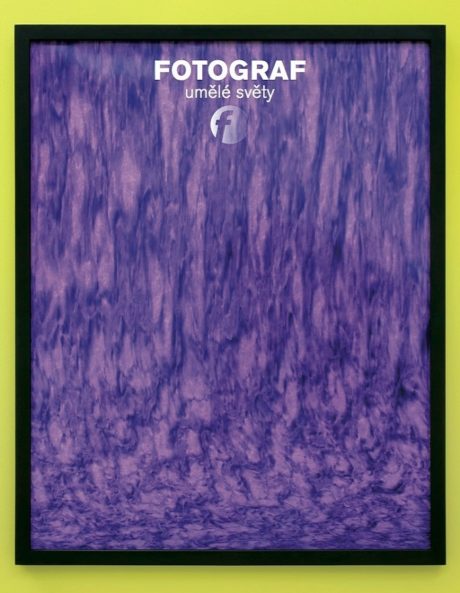History of Light
When I explained that History of Light (Dějiny světla) was supposed to be a novel, the shop assistant remarked, from between the non-fiction shelves, something about a misleading title. Well, in fiction one should better not expect factual history. Although it advertises itself as the story of the photographer František Drtikol (1883–1961), the real subject of the book is the art of the writer Jan Němec (1981).
The “Prologue” is riveting, its sketching of Příbram iron ore mines as plastic as a battlefield panorama by a prominent film director. The central character is inserted into the story as a nine-year-old medium, talking with the other world and imagining a figure of fate’s messenger who is hinting at his future as an artist and citizen. That last day of May 1892 Fráňa’s pen is brand new and the curious boy immediately asks the person who gave it to him, his father, whether all that will be drawn is already concealed in the pencil lead. “We know nothing in advance,” the well-read shopkeeper replies. The posited contradiction is a familiar trope, shared across generations: the child’s imagination is limited by the inherited load of positivism.
The depiction of Drtikol’s growing up is done in a lively language sparsely interlaid with archaisms. The dialogues are spiced up with contemporary professional slang and German sayings. The intention is to subjectively interpret a bygone life story and that within the popular frame of didactic-informative novel (the so-called Bildungsroman). The author knows he is addressing a modern-day reader and relinquishes all evocations of experience through literary means outdated before the World War I. The literary scenes and protagonists’ appearances are invented and in many small details validate modern imagination. The studies of different professional settings (from the miners’ milieu to a photo studio) are as suggestive as Fráňa’s denied sexual awakening, made sour by nosey questions from the maimed metal-digger Bohumil. There are interesting excursions into the protagonist’s reading as well as diverse flights of fancy – the schoolboy’s, apprentice’s or student’s. An addressee of Drtikol’s incidents unburdened by historical knowledge and factography can let himself or herself be carried by the inventiveness of the wonderful cycling contests and running competitions to Svatá Hora, or else by the grammar schoolers’ masturbation triathlon. Maybe a screening of Fellini and Guerra’s Amarcord will flash through their mind and maybe they will not be disturbed by the question what will happen at confession…
Where we are not moving along the non-fiction path the twenty-first-century narrative perspective flows smoothly. Apart from counter-illusive passages, the distance between the author and the narrator is affirmed also in the passage confirming the oracle’s credibility: “Lines in the book of the world stay empty on the as-yet unread pages. But is it so? In one of the following chapters the Bengali poet Rabindranath Tagore will visit your atelier. You have no inkling of that and yet he is in fact already there, if only you could just skim forward, anyone can make sure except for you.”
Has not intuition been forgotten here?
To succeed with the choice of such a difficult historical subject matter is indeed not easy. “Intermezzo” is left to Drtikol himself. It consists of the photographer’s epistolary novel published under the title Journals and Letters Dedicated to Eliška Janská 1914–1918 (Svět 2001).
Just as different people become excuses for photographers’ free creations, the novelist has turned Drtikol into a fuse at the center of History of Light. Jan Němec expresses his own opinions and positions, his own horizon and depth of insight. The reader who is interested in what happened to Drtikol really is in the final “Author’s Note” referred to non-fiction sources. The writer himself obviously could not do without comprehensive information and, as it is the case with scholarly monographs, expresses his gratitude to those who helped add depth and accuracy in the course of the two years’ work on the manuscript.
Jan Němec: Dějiny světla. Brno, Host, 2013, 488 pages.
#23 artificial worlds
Archive
- #45 hypertension
- #44 empathy
- #43 collecting
- #42 food
- #41 postdigital photography
- #40 earthlings
- #39 delight, pain
- #38 death, when you think about it
- #37 uneven ground
- #36 new utopias
- #35 living with humans
- #34 archaeology of euphoria
- #33 investigation
- #32 Non-work
- #31 Body
- #30 Eye In The Sky
- #29 Contemplation
- #28 Cultura / Natura
- #27 Cars
- #26 Documentary Strategies
- #25 Popular Music
- #24 Seeing Is Believing
- #23 Artificial Worlds
- #22 Image and Text
- #21 On Photography
- #20 Public Art
- #19 Film
- #18 80'
- #17 Amateur Photography
- #16 Photography and Painting
- #15 Prague
- #14 Commerce
- #13 Family
- #12 Reconstruction
- #11 Performance
- #10 Eroticon
- #9 Architecture
- #8 Landscape
- #7 New Staged Photography
- #6 The Recycle Image
- #5 Borders Of Documentary
- #4 Intimacy
- #3 Transforming Of Symbol
- #2 Collective Authorship
- #1 Face

